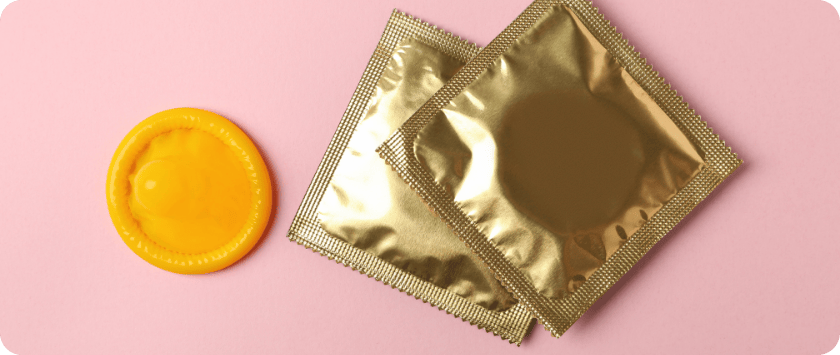Condoms

Talking about condoms with your partner or close friends is essential. Today, there are many effective HIV prevention methods, but condoms remain one of the most reliable ways to prevent both HIV and other sexually transmitted infections (STIs).
When used correctly and consistently during sex, condoms significantly reduce the risk of HIV infection. However, it's crucial to learn how to use them properly to ensure maximum protection.
Condoms are especially effective at preventing STIs transmitted through bodily fluids, such as gonorrhea and chlamydia. However, their protection is lower against infections transmitted through skin-to-skin contact, such as HPV (genital warts), genital herpes, and syphilis.
While there are now more prevention options than ever before, condoms remain a vital tool. Learn more to see if condoms are right for you and how to use them effectively.
Male Condoms
Male condoms are external condoms worn over the penis during sex. They are made from various materials, including latex, plastic (polyurethane), synthetic rubber, or natural membranes.
Did you know? Latex condoms are the most effective type for HIV prevention.
If you're allergic to latex, condoms made from polyurethane or synthetic rubber are a good alternative. However, polyurethane condoms are more prone to breakage. Natural membrane condoms (e.g., lambskin) have tiny pores and should not be used for HIV or STI prevention.
How to Use a Male Condom
- Check the expiration date and packaging for damage. Do not use it if the package is torn or compromised.
- Carefully open the package with your fingers — never use sharp objects or teeth.
- When the penis is erect, place the condom on the tip. If uncircumcised, pull back the foreskin first.
- Pinch the tip of the condom to remove air and roll it down to the base of the penis.
- Ensure the condom is snug and secure.
- After ejaculation, withdraw the penis while it is still erect, holding the base of the condom to prevent it from slipping off.
- Carefully remove and tie off the condom before disposing of it in a trash bin — never flush it down the toilet.
- If the condom breaks during sex, stop immediately, withdraw, and replace it with a new one.
Pro Tip: Use water-based or silicone-based lubricants during sex to reduce the chance of condom breakage. Avoid oil-based products (e.g., petroleum jelly, baby oil, lotion) as they can weaken the condom and cause it to tear.

Female Condoms
Female condoms are internal condoms inserted into the vagina or rectum before or during sex. Made from nitrile, a synthetic material safe for people with latex allergies, they have two rings: one internal ring to insert, and one external ring that stays outside to prevent slipping.
How to Use a Female Condom
- Insert before sexual activity and ensure it is positioned correctly — not twisted or pushed too far inside.
- Use only once. A new condom should be used for every sex act.
- Do not use male and female condoms together, as this can cause friction and lead to breakage.
- Female condoms can be used with any type of lubricant — water-based, oil-based, or silicone-based.
Where Can You Get Condoms?
Condoms are widely available for purchase at pharmacies, department stores, convenience stores, vending machines, and online platforms. Additionally, you can access free condoms at health clinics or certain public health organizations Use our search tool here to find nearby services and see where free condoms are distributed in your area.